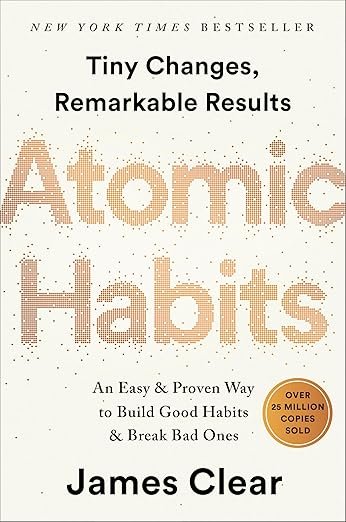It’s 11 PM. You planned to be asleep an hour ago, but here you are, phone in hand, thumb moving in a slow, hypnotic rhythm. One headline about a political crisis bleeds into a story about a natural disaster, which leads to a worrying economic forecast, and then a tragic local news report.
Your shoulders are tense, your jaw is clenched, and a low-grade hum of anxiety thrums beneath your ribs. You know you should stop. You want to stop. But you keep scrolling, digging deeper into a rabbit hole of despair.
If this scene feels hauntingly familiar, you’ve experienced doomscrolling.
This isn’t just a quirky internet slang term; it’s a modern phenomenon with a significant impact on our mental health. Learning how to stop doomscrolling is no longer a simple productivity hack—it’s a critical act of self-preservation in a world saturated with information.
This isn’t about ignoring what’s happening in the world. It’s about learning to engage with information in a way that informs you without consuming you. This guide will walk you through five practical, science-backed steps to help you break the cycle, protect your peace, and build a healthier, more intentional unplugged routine.
Table of Contents
The Science Behind the Scroll: Why Is Doomscrolling So Addictive?
Before we can break the habit, we need to understand why our brains are so susceptible to it in the first place. Doomscrolling isn’t a sign of personal weakness; it’s a result of a perfect storm between our ancient brain wiring and modern technology.
1. The Brain’s Negativity Bias: From an evolutionary perspective, survival depended on being hyper-aware of threats. Our ancestors needed to pay close attention to the rustling in the bushes (a potential predator) rather than the beautiful sunset. This “negativity bias” means our brains are naturally wired to seek out and pay more attention to negative information than positive information. News outlets and social media algorithms exploit this, knowing that alarming headlines are more likely to grab our attention.
2. The Search for Certainty: During times of crisis or uncertainty, our brains desperately seek information to feel a sense of control. We believe that if we just read one more article or see one more update, we’ll finally understand the situation and be prepared. However, the 24/7 news cycle rarely provides a neat conclusion, leading us into an endless loop where we search for an answer that never comes.
3. Intermittent Reinforcement: This is the same psychological principle that makes slot machines so addictive. Social media feeds are a prime example. Most of what you see is mundane, but occasionally you’ll find a piece of information that feels incredibly important or validating. This unpredictable reward system keeps you scrolling, always hoping the next swipe will deliver that crucial update.
Understanding these forces is the first step toward taking your power back. You’re not just fighting a bad habit; you’re consciously overriding deep-seated psychological triggers.

Step 1: Identify Your Triggers (The ‘When’ and ‘Why’)
The first actionable step to stop doomscrolling is to become a detective of your own behavior. Mindless habits thrive in the absence of awareness. To break the cycle, you must first illuminate it.
Ask yourself these questions and consider writing down the answers:
- When do I doomscroll the most? Is it first thing in the morning while still in bed? Late at night when I can’t sleep? During lunch breaks at work? While waiting in line? Pinpoint the specific times of day.
- What emotions trigger the scroll? Do you reach for your phone when you feel bored? Anxious? Lonely? Procrastinating on a difficult task? Often, doomscrolling isn’t a search for information but an attempt to numb an uncomfortable feeling.
- Which apps are my biggest time sinks? Is it Twitter’s chaotic real-time feed? The endless scroll of Instagram’s Explore page? Facebook? A specific news app? Knowing the specific source of the problem is crucial.
Once you have this data, you’ll start to see a pattern. For many, it’s a combination of unstructured time and a feeling of anxiety. You might realize your late-night scrolling is a direct result of feeling stressed about the next day. This awareness is your leverage. You can’t fix a problem you don’t understand.
Step 2: Create Intentional Friction
Habits, both good and bad, follow the path of least resistance. Right now, opening a news or social media app is probably effortless. The goal of this step is to make it slightly more difficult—to add “friction” between the impulse and the action. This small delay gives your conscious mind a chance to intervene and make a different choice.
Here are some powerful ways to create friction:
- Move Triggering Apps Off Your Home Screen: Banish them to a folder on the last page of your app screen. This forces you to consciously swipe and search for the app instead of opening it on autopilot.
- Log Out of Your Accounts: After each use, log out of your social media accounts. Having to type in your username and password every time is a significant deterrent to mindless checking.
- Set App Time Limits: Both iOS and Android have built-in digital wellbeing tools that allow you to set daily time limits for specific apps. Set a realistic limit (e.g., 20 minutes per day for Twitter). When your time is up, the app will be blocked. This is a hard boundary set by you, for you.
- Turn Your Screen to Grayscale: This is a surprisingly effective psychological trick. A colorful, vibrant screen is stimulating and rewarding. A gray screen is… boring. Go to your phone’s accessibility settings and activate the color filter. You’ll be amazed at how much less appealing your phone becomes.
Step 3: Implement a “Pattern Interrupt”
A pattern interrupt is a technique used to break a state of mind or a habitual behavior. When you feel yourself slipping into the doomscrolling trance, you need a pre-planned action to jolt you out of it.
Your pattern interrupt should be simple, physical, and easy to do in any situation.
- The “Stand Up and Stretch” Rule: The moment you recognize you’re doomscrolling, your rule is to immediately stand up, place your phone face down on the table, and stretch your arms toward the ceiling for 10 seconds. This physical action breaks the mental loop and gives you a moment to reset your intention.
- The 5-4-3-2-1 Grounding Technique: This is a powerful tool for pulling your mind out of an anxiety spiral and back into the present moment. Pause and silently name:
- 5 things you can see
- 4 things you can feel (the texture of your chair, the cool air on your skin)
- 3 things you can hear
- 2 things you can smell
- 1 thing you can tasteThis technique short-circuits the anxious thought loop and anchors you in your physical environment.
- The “Why” Question: When you catch yourself scrolling, simply pause and ask yourself out loud, “What am I really looking for right now?” The answer is rarely “more bad news.” It might be “a distraction,” “a feeling of connection,” or “a way to avoid my work.” Acknowledging the true need allows you to address it in a healthier way.

Step 4: Curate Your Information Diet Ruthlessly
You are the gatekeeper of your own mind. You have the power to control the information that you consume. It’s time to stop passively accepting a firehose of negativity and start actively curating a more balanced information diet.
- Unfollow, Mute, and Block Liberally: Go through your social media feeds. If an account consistently posts content that makes you feel anxious, angry, or hopeless—even if it’s a well-meaning friend or a major news organization—unfollow or mute them. This isn’t about creating an echo chamber; it’s about protecting your mental space. You can always seek out information on your own terms.
- Switch from “Push” to “Pull”: “Push” notifications are alerts that are pushed to you by apps. “Pull” is when you decide to go and pull information when you need it. Turn off ALL news and social media notifications. Instead of letting headlines interrupt your day, schedule a specific time to check the news.
- Subscribe to Curated Newsletters: Instead of endlessly browsing chaotic news sites, subscribe to one or two trusted, high-quality newsletters (like The Morning Brew or a weekly summary from a reputable source). They deliver a finite, curated summary of the most important news, giving you the information you need without the endless scroll.
Step 5: Replace the Habit with a Restorative Routine
You can’t just eliminate a habit; you have to replace it with a better one. Now that you’ve identified your triggers and created friction, you need to decide what you will do instead when the urge to doomscroll arises. This is where you build your new unplugged routine.
Refer back to the triggers you identified in Step 1.
- If your trigger is BOREDOM: Have a “boredom buster” list ready. This could include reading a chapter of a book, listening to a podcast, doing a 5-minute Duolingo lesson, or watering your plants.
- If your trigger is ANXIETY: Your replacement should be a calming activity. Try a guided meditation app (like Calm or Headspace), deep breathing exercises, journaling about what’s making you anxious, or stepping outside for a few minutes of fresh air.
- If your trigger is TIREDNESS (late-night scrolling): Your replacement is a dedicated wind-down routine. Charge your phone outside your bedroom. Pick up a physical book (fiction is often best before bed). Sip a cup of herbal tea. Do some light stretching.
“The key to breaking the doomscrolling cycle for good is to replace it with a positive habit that sticks. If you want to master this skill, we can’t recommend James Clear’s book Atomic Habits enough. It provides a simple, powerful framework for understanding how habits work and how to build better ones, one small step at a time.”

Your Peace of Mind Is Worth Protecting
Learning how to stop doomscrolling is a journey, not an overnight fix. There will be days you fall back into the habit, and that’s okay. The goal is not perfection but progress.
By understanding the science, identifying your personal triggers, and implementing these five practical steps, you can break free from the cycle. You can transform your relationship with technology from one of mindless consumption to one of conscious, intentional use. Your time, your attention, and your mental health are your most precious assets. Start protecting them today.
What’s your biggest doomscrolling trigger? Share your experience in the comments below—your story might be exactly what someone else needs to read to feel less alone.
For more tips on building a healthier relationship with technology, subscribe to the Unplugged Routine newsletter. We’ll provide you with the tools and inspiration you need to thrive in the digital age.